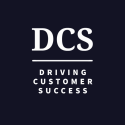What Does Customer Centricity Really Mean?

Customer centricity is a way of running your business — implementing a perfect customer experience at each stage of the pipeline. It’s an approach to develop better brand loyalty and satisfaction, resulting in more client referrals and an extended customer lifetime.
Here are some steps you can take to get your team moving toward customer centricity.
1. Research your customers.
It’s much easier to build your brand around a customer you know and understand. This goes beyond a general buyer profile and taps into the needs, feelings and motivations of each customer. Customer-centric organizations know their clients on two levels — industrially and personally. Hence, customer research takes place on two distinct levels.
Industrial-level research: Industrial-level research involves finding the challenges a customer faces in their business sphere. This research accelerates the task of identifying key features that a customer needs.
You can be really particular with industrial-level research, trawling the web to provide a fully informed experience for your customer. But even in the “customer-centric world,” we don’t expect that. We use technology to do the heavy lifting for us. For example, you can set up email alerts with a keyword, either the name of the business or the industry. Afterward, you’ll get a notification whenever a news story about that topic appears. By adding this information to the notes in your CRM system, you’ve gained some omnipresent customer context.
Personal-level research: Individual customer research is a little more hands-on. Your demo chat, onboarding talk, check-in sessions and any other chances to talk to clients are opportunities to put customers at the center of your brand.
Ask questions about the day-to-day hurdles clients face. Find out the triggers for their shopping spree and what they want to achieve. Are they being proactive or reactive? Ask them who they sell their product to, what their buyer profile looks like and how they optimize their product for them. Get to the heart of their business, processes and customers. Take note of all their answers.
For your sales team, customer success can be an unrelenting task. The nature of any business is that things change, and these conversational research sessions should be taken at regular intervals over a customer’s lifetime. Regular customer feedback surveys are a great way to meet this end. With authentic research data at the heart of operations, your product grows with your customers.
2. Listen and engage.
“Sales school” doesn’t teach salespeople the most basic part of being a customer-centric seller: effective listening. Release your sales team from the shackles of a sales script. It’s essential for team members to be present and involved in the conversation with their interlocutor; they should forget their agenda. I often find salespeople tend to focus on the following question they want to ask, which detracts from the question you had in the first place. Don’t hold an interview; take part in a conversation.
Clarifying questions and statements like “It seems like you…” and “So what you’re saying is…” are a great way to squeeze information out of clients. Find out anything and everything: feature needs for developers, content preferences for the marketing team and even pricing concerns for sales and support.
My sales team always strives for a 2-to-1 ratio of listening to speaking. I also ask them to leave three seconds after an interlocutor has finished their answer to see if they have anything else to add. There’s no script, no templates, no examples — conversations change on a client-by-client basis.
3. Share and centralize knowledge.
Placing customers at the heart of business operations isn’t just a job for the sales team, it’s a companywide operation. Customer centricity should be visible at every stage of the sales pipeline — front and center of every employee’s motivation to be effective.
Share the data and knowledge that frontline employees gain with all your employees. Take advantage of that knowledge externally, educating clients how to use a product more effectively and around new functionality.
Centralize your teams’ motivations too. Set up regular meetings, create dedicated chat channels, share tips, find workarounds as a team and discuss how to deal with problems as and when they come. Eat lunch and play ping-pong together — help your teams cooperate better and invest in their happiness! Eventually, the good vibes are bound to trickle down to your customers.
4. Personalize and be proactive.
Each of the above paragraphs culminates in this final step. Based on the shared database of knowledge your business has gained, your sales team’s listening abilities and a newfound inter-team ethos for customer success and centricity, it’s time to personalize and be proactive with your business and its offerings.
Act fast and nip any problems in the bud. Don’t wait for an unhappy customer to cancel their subscription; figure out the signs and deal with issues as soon as you identify them. Your developers can create features based on what customers are asking for; support and success teams can provide advice, tips and troubleshooting; and marketing teams can keep a one-track mind for which content penetrates.
It’s possible, even without the resources or personpower. Make your users feel like part of a community where they can help each other. Create a platform for them to exchange ideas, challenges and tips to overcome them. An online community also serves as a hub — a center for customers to share ideas.
Your customers are your business; their success is directly correlated with your own success. Even after the money comes and the success and the sunny horizons, never lose sight of why you started your business in the first place. You likely started it to share something with the world, to help people.
Keep them at the heart of everything you do – Andrei Petrik

Hakan Ozturk
Founder, theCScafe.com, #1 Weekly Customer Success Newsletter
Hakan Ozturk is a Paris-based Customer Success leader with over 15 years of experience in the computer software industry. Passionate about driving growth and delivering value to strategic customers, Hakan has established himself as a trusted industry expert. As the Founder of The Customer Success Café Newsletter and TopCSjobs.com, Hakan provides valuable industry insights and daily-updated job opportunities worldwide in the field of Customer Success. Connect with Hakan to boost your career in CS and your company’s potential for massive growth.

Leave a Reply